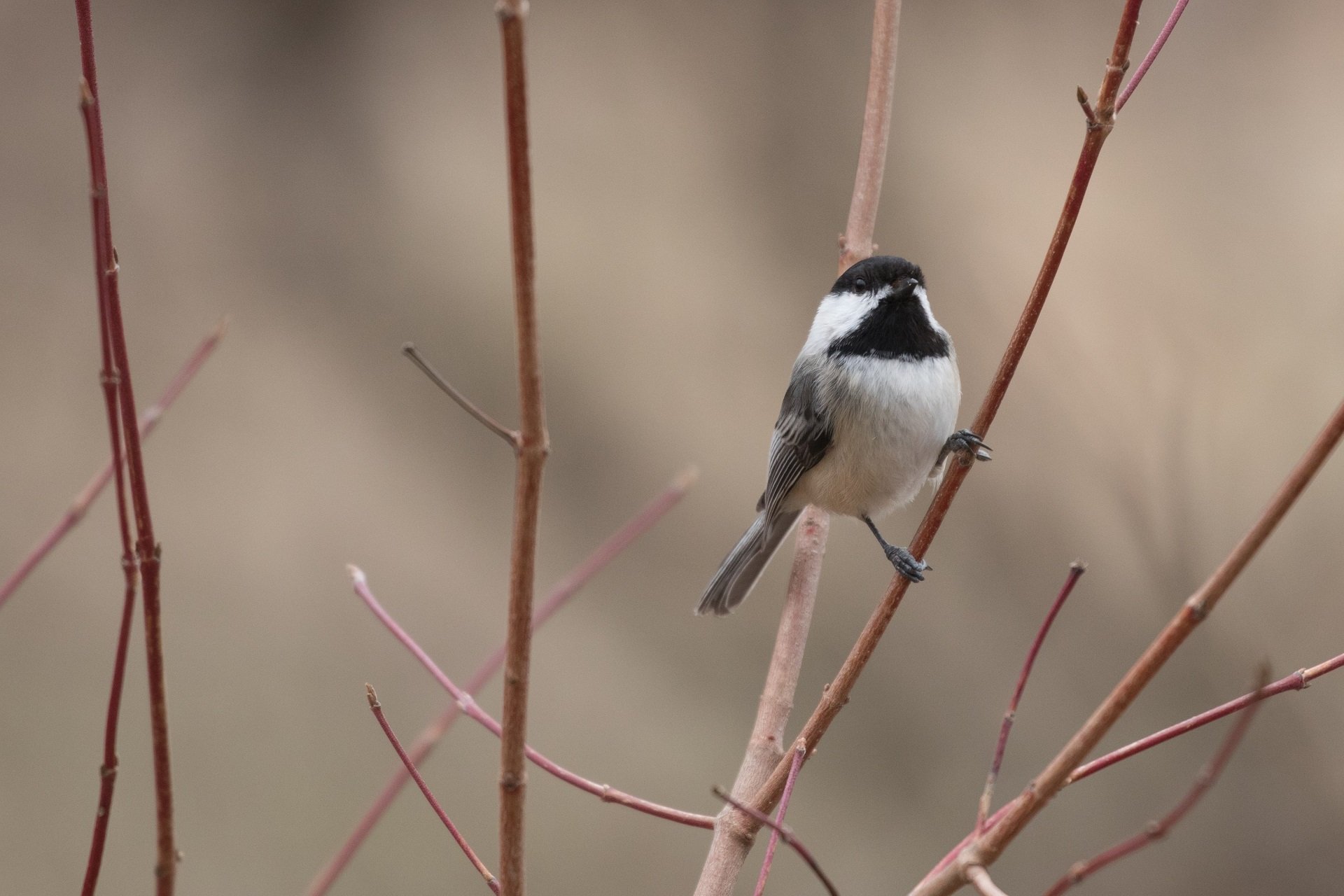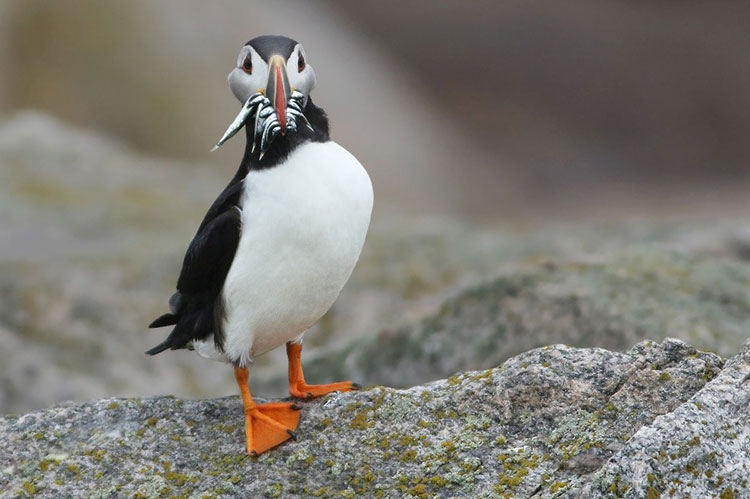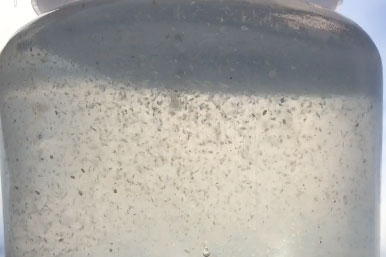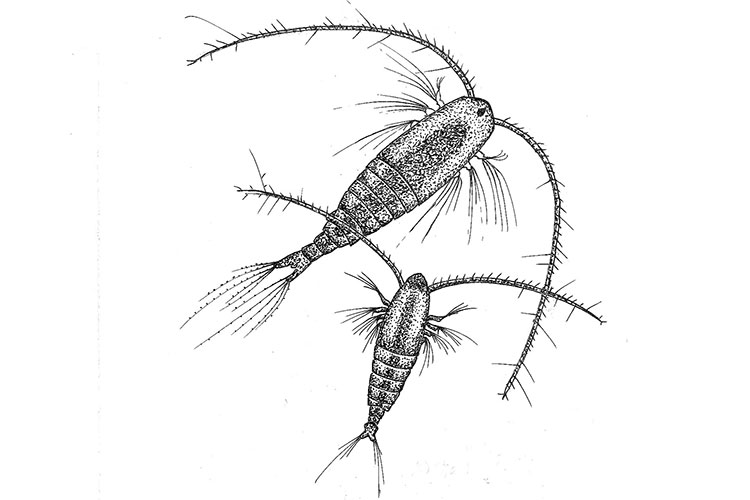Mass Audubon State of the Birds
State of the Birds 2017: Case Study - Atlantic Puffin
From Plankton to Puffins
The impacts of changes in the lower trophic levels are already being seen in the colonies of Atlantic Puffin nesting along the coast of Maine. In the diets of puffin chicks, preferred prey species such as Atlantic herring have declined, while less favored prey species such as butterfish have been increasing, possibly because the less favorable fish are better able to accommodate the environmental shifts occurring in the Gulf of Maine.
During 2012 and 2013, a period of intense warming in the Gulf of Maine, there was a severe decline in the number of Atlantic puffin chicks that fledged successfully. Then in the summer of 2016, dry weather and unseasonably warm sea-surface temperatures created additional challenges for nesting puffins. On Machias Seal Island in the eastern Gulf of Maine—home to more than 5,000 pairs of nesting puffins—nearly 90% of the chicks died. Remarkably, puffins nesting farther west in the Gulf of Maine that same season had a relatively successful year. Researchers from Project Puffin have suggested that the relative success was the result of a trend in which phytoplankton blooms are increasingly occurring in the western Gulf of Maine but not in the eastern Gulf of Maine.
Atlantic puffins are helping us to understand the effects of significant climate-related changes at lower trophic levels. At the same time, Atlantic puffins are also teaching us about resiliency in the face of climate change. Puffins seem to have the ability to readily switch prey sources, a flexibility that may benefit them when their preferred prey becomes unavailable. Also, since Atlantic puffins currently nest on multiple islands in the Gulf of Maine, a change in the distribution of prey that causes a colony on one island to fail could potentially benefit another colony on a different island.
The struggles of puffins to cope with the effects of a changing climate are just beginning. They are a bellwether of sorts—a new canary in the coal mine. Their fate will likely mirror that of other ocean-dependent birds, and all eyes should be on the iconic "Sea Parrot."
It's All in the Timing
Climate change has already produced changes in the phenology of a wide variety of organisms in nearly every ecosystem. As top marine predators, seabirds are potentially at risk whenever phenological shifts occur at lower trophic levels. We know that sand lance and Atlantic herring are the most important fish species in the diets of nesting seabirds in northeast (Hall et al, 2002; Goyert et al, 2014; Kress et al, 2016).
But how will changing climate affect these fish species, and the birds that depend on the fish?
Rapidly warming sea-surface temperatures in the Gulf of Maine have altered the phenology of everything from the timing of plankton blooms to the nesting schedule of Atlantic puffins. Over the past decade, spring phytoplankton blooms in the Gulf of Maine have been occurring earlier, although there has been some annual variability (Friedland et al, 2015).
The Gulf of Maine is not alone in this shift. Between 2003 and 2012, warmer spring water temperatures off the coast of Martha’s Vineyard coincided with phytoplankton blooms occurring nearly 20 days earlier than usual (Hunter-Cevera et al, 2016). Such significant and seasonally abrupt changes in the phenology of phytoplankton blooms will inevitably have consequences for the numerous marine organisms that depend upon plankton for food.
If the organisms that feed on phytoplankton are unable to shift their own phenology to synchronize with the peak availability of phytoplankton, their populations could potentially be at risk (Hunter-Cevera et al, 2016).
What Happens If the Restaurants Close?
The first organisms likely to be influenced by shifts in phytoplankton phenology are zooplankton. In the Gulf of Maine, the most abundant and well-studied zooplankton species are copepods. Many of these microscopic herbivorous animals depend on phytoplankton blooms as a primary source of food.
Because copepods are a major prey item for a variety of larger consumers, changes in their patterns of abundance could have major impacts on the entire Gulf of Maine ecosystem. Among the animals that feed on copepods are North Atlantic right whales, plankton-eating seabirds such as storm-petrels, phalaropes, and dovekies; forage fish including sand lance and Atlantic herring; and other important fishery species such as cod.
In the North Atlantic, researchers have determined that the survival rate of larval cod is highly dependent on the timing of overlap between larval fish and their copepod prey (Kristiansen et al, 2011). Although much is unknown about the interactions between copepods and their predators, it is well established that the survival of many marine predators depends on the phenology and abundance of organisms at lower trophic levels.






